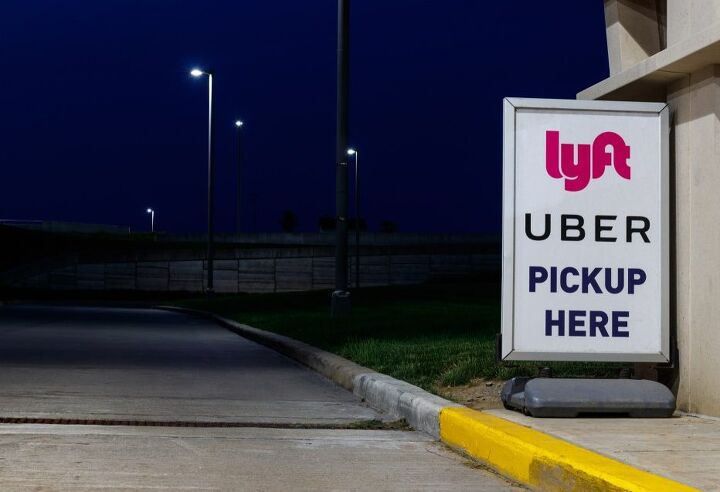#UberEats
Do You Think Uber and Lyft Will Ever Be Profitable?
While the tech industry does have firms pushing useful applications and products, it’s quite possibly the most disingenuous business sector of the modern age. Companies selling literally nothing more than false promises routinely see multi-billion-dollar valuations. The necessary hardware is always just “years away” and sold to investors who haven’t realized it was never real in the first place. A significant portion of the industry is also little more than reorganizing payment structures or access to services for the sake of convivence, making sure you’re locked into a plan that keeps your financial and personal details perpetually on file. But sometimes this actually results in worthwhile solutions which may (or may not) be capable of turning a legitimate profit.
Ride-hailing firms are probably one of the earliest and best examples of all the above. Uber and Lyft both lost a lot of money in 2020 but both remain convinced that profitability is just over the next hill. But there are plenty of obstacles littering the incline.
Uber In Negotiations to Purchase Postmates
Uber Technologies is reportedly in negotiations to acquire Postmates, specifically for the purpose of incorporating the brand’s food-delivery services into Uber Eats and cashing in government lockdowns that look to ensure 2020 remains a perfectly dismal year.
Our collective loss may end up being Uber’s gain, however.
With constraints easing in most regions, ridership is slowly creeping back up. That will undoubtedly continue as risk-adverse urbanites choose to avoid the subway and bus lines for months to come.
Meanwhile, new restrictions on dining establishments are effectively forcing delivery services to become an umbilical cord between restauranteurs and their customers. Now is the perfect time to get a bead on the market and make moves, ensuring your place as the all-important middle man.
Uber Death Watch: Ride-hailing Firm Cuts 3,000 Additional Jobs
Uber Technologies eliminated an additional 3,000 jobs on Monday, closing offices around the world as certain regions revealed less growth than the outfit had hoped for. We covered the ride-hailing firm’s financial situation last week, as reports circulated that it wanted to drop a few billion to acquire Grubhub and enhance its own food-delivery service in the wake of the coronavirus pandemic.
At the time, the firm had already cut 3,700 jobs pertaining to customer support and human resources. Even in the absence of people shunning shared transportation and local governments forcing citizens to stay indoors, Uber’s preexisting inability to turn a profit would probably have forced the company to restructure eventually. The pandemic pinned the accelerator to the floor mat, however, likely forcing additional cuts by the company’s own admission. Considering Uber has already axed about a quarter of its global workforce, it’s probably time to place it on death watch.
Uber Reportedly Wants to Acquire Grubhub
Uber Technologies has reportedly made an offer to buy Grubhub — a food delivery service that links local restaurants directly to customers via a convenient app. Considering Uber Eats is as unprofitable as the company’s core ride-haling business, dropping a bunch of money to acquire a similar business seems silly… until you realize Grubhub is pretty much the only food-delivery outlet to occasionally turn a profit.
Buying up the only legitimate threat to your side business could be wise, even if it’s also somewhat monopolistic, but large, unprofitable tech entities with slick-sounding business plans and massive stock valuation seem bulletproof right now. They can buy up whatever outfits they want and nobody bats an eyelash until an isolated incident pops up that the media can temporarily harp on.
Even with the coronavirus rattling Uber’s share price in March, with ride frequencies more than halved in major metropolitan areas around the globe, its value crept back up in subsequent months. The company also enacted cost-cutting measures, eliminating 3,700 jobs and shuttering 180 driver service centers, with more cuts presumed to follow later this year. While dropping a few billion on Grubhub seems at odds with corporate thriftiness, it may prove beneficial in the long term — especially with investors heaping pressure on Uber to provide evidence it can someday become routinely profitable.
Uber Goes Old School With New Delivery Services
With a pandemic suppressing the world’s need for transportation, Uber has kept itself busy by offering free rides to healthcare workers and expanding its food-delivery service, Uber Eats. Initially, that meant activating the program in more countries. The ride-hailing company has since added ways for businesses to manage meal plans for employees working from home while attempting to supply drivers with masks and disinfectant sprays.
This week, the company said it will expand the ways in which customers interface with these services. But this new method has been popular for well over a century. In a bid to encourage older Americans to use its food-delivery services, Uber has implemented a telephone line designed to help Luddites trapped in their homes. Customers can now dial a toll-free number and discuss menu options with an Uber representative who will help then finalize and pay for their order.




















Recent Comments